A roundtable discussion at TABLE Studios, co-hosted with The Buhl Foundation, helps us learn about the vital work of Pittsburgh’s non-profit sector, its struggles, its triumphs, and how we can all pitch in to help our neighbors. During this season of generosity, let’s keep these important human services organizations in mind. They improve the lives of our neighbors with their mighty work.
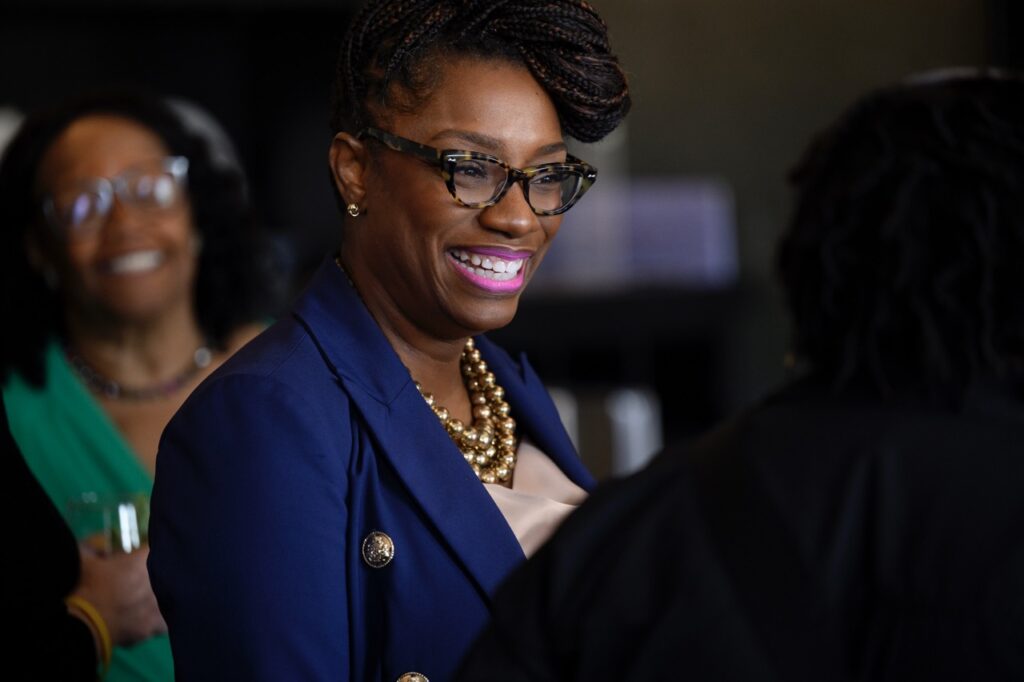
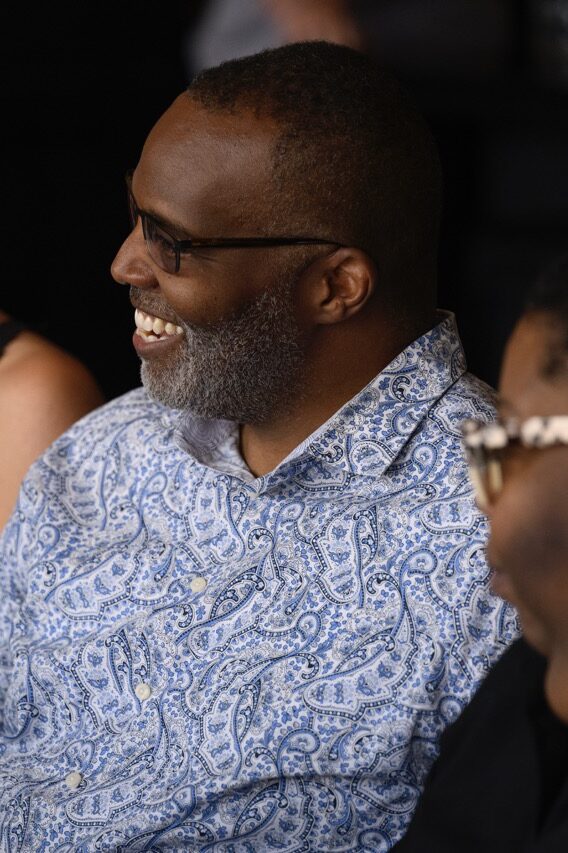
A J Jefferson, Executive Director, Homeless Children’s Education Fund and Rev. Jerrel T. Gillian, Executive Director, Light of Life Rescue Mission
All About Nonprofits in Pittsburgh
A group of busy nonprofit warriors paused their noble missions to gather recently at TABLE Studios for lunch and inspiring conversation. As guests tucked into the first course by Chef Mike Godlewski of Deutschtown’s plant-forward EYV (or “eat your veggies”), Editor-in-Chief Keith Recker welcomed the group to explain the invitation. “At TABLE we always talk about living a great life here in Western Pennsylvania,” he explained, “and you all are part of it.” He named the important goal of shedding light on the attendees’ “vital and necessary” work, as well as learning what we all can do to offer support.
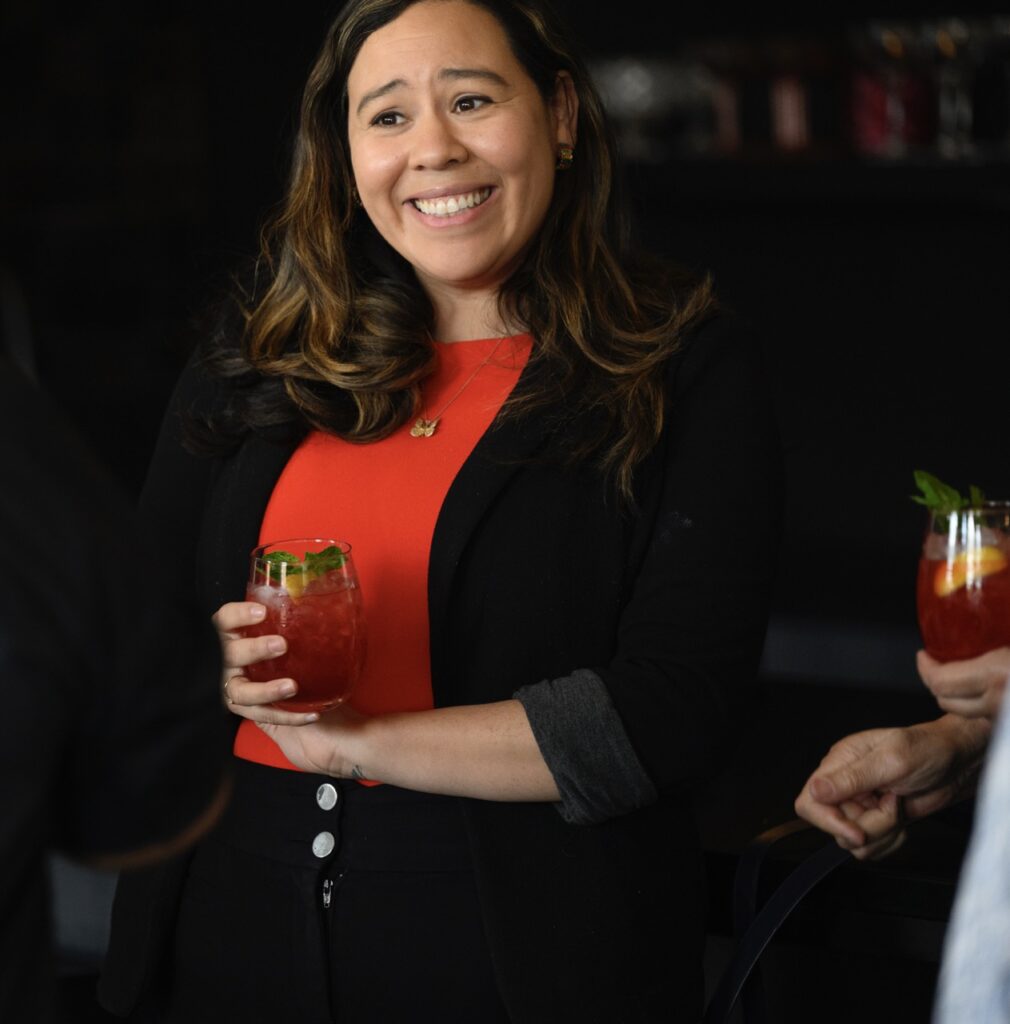
Rosamaria Cristello, Founder and Executive Director, Latino Community Center
Diana Bucco, President of The Buhl Foundation and co-host of the event, shared her own motive, since she knows firsthand how hard each person works. “It’s an excuse to force you to take a timeout and enjoy a good meal with some really wonderful people,” she said. “Just a couple hours, catch your breath, feel good about what you’ve done and continue to do. We’ll go back to fighting the good fight in a couple hours.”


The Power of Connection
Participants introduced themselves and expressed excitement about the gathering, making new connections, and sharing in-person conversation with those they often collaborate with only via Zoom. “I believe in the collective genius of the room and our community,” said Reverend Jerrel T. Gilliam. “Diana has exemplified that, and I’m always honored to be involved. Looking forward to the dialogue — as well as the food.” Standout dishes from EYV included a cabbage-based “pastrami” entrée and tofu-onion chocolate mousse for dessert (vegan, gluten-free, and decidedly delicious).
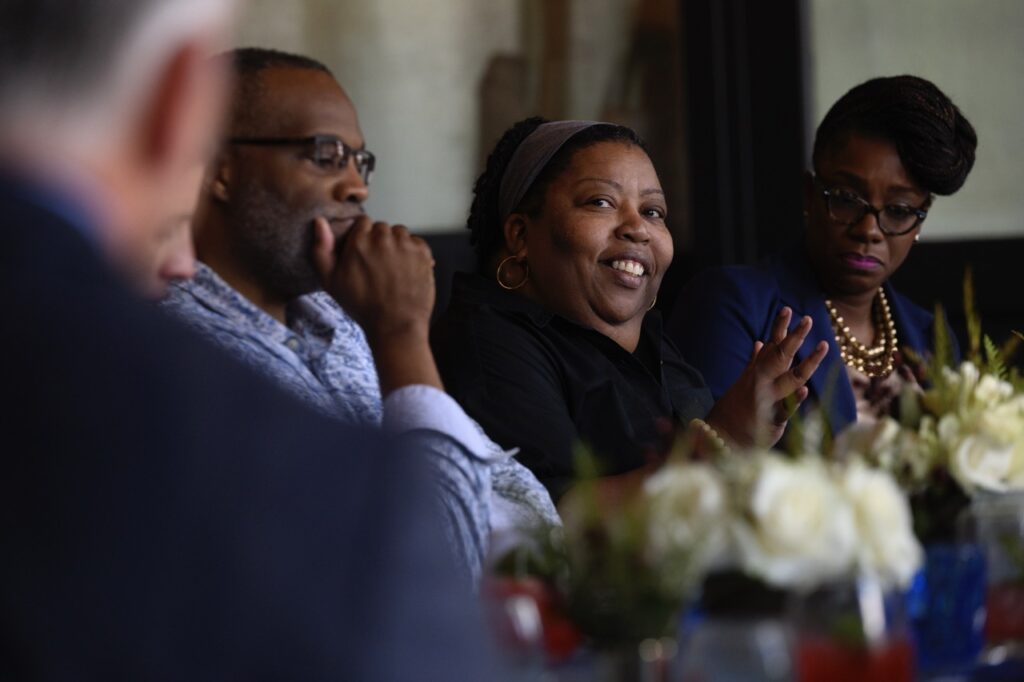
Demeshia Seals, CEO, Sarah Heinz House
Several participants admitted to currently feeling in the thick of things, further amplifying the need to be in community with others sharing the same goals and values. Ozzy Samad said that historically the work he’s done has been overseas, so seeing this group actually making a difference on the ground felt very meaningful. Demeshia Seals admitted that, in the nonprofit space, you can get so immersed that you forget part of doing the work involves collaborating and networking. “Sometimes without those relationships,” she said, “the work doesn’t get done.”
Sloane Davidson, who founded Hello Neighbor seven years ago, said that in previous years she might not have had the space to accept such an invitation. On that note, Seals asked everyone to commit to “yes” moving forward. “There will always be more to do,” she said, “but these types of opportunities are not always available to us.”
Challenges Faced in 2024
Across the board, roundtable participants noted an increase in need among their constituents, driven by inflation and the loss of additional support provided, for a time, through COVID-era programs. A J Jefferson described how things have become more expensive. The number one issue for those she works with is the need for adequate, safe housing. She explained that both pre- and post-COVID, the minimum wage was $7.25, but during the pandemic, there at least was a moratorium on evictions.
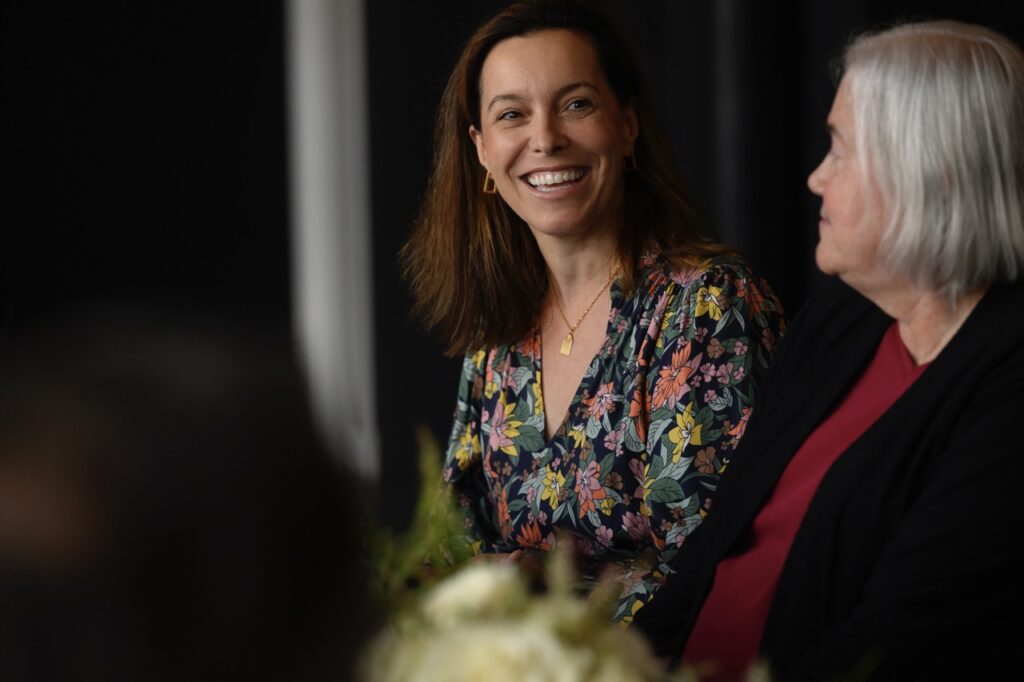
Sloane Davidson, Founder and CEO, Hello Neighbor
She noted an increase in families led by black women, many of whom are working two or three jobs to support their families. While 4,100 students identified as experiencing homelessness before the pandemic, she believes the 2022-23 school numbers (3,122) are far lower than reality. Her team believes there are more than 5,000 students in the county experiencing homelessness, and 40,000 in the state.
Seals said COVID offered unique economic opportunities within nonprofits, but most of those opportunities have vanished. Now no one discusses funding for the large gaps they’ve discovered when attempting to move the unhoused from surviving to thriving. “We shouldn’t be talking about the bare minimum,” she said. “COVID unmasked a lot of things, and things got worse, not better.”
The Long-Term Effects of COVID
Jerrel Gilliam called out an increase in mental health challenges. Stats show that the number of people who’ve experienced adverse childhood events (ACE) has gone up greatly. And the presence of many undiagnosed and untreated issues has unfortunately coincided with the defunding of mental health programs.
He mentioned the term “anosognosia,” or the inability to recognize the need to ask for help. Studies show that 50 percent of the homeless community fall under this diagnosis. Gilliam reiterated that this part of our population simply doesn’t see that they have a problem. “We have to be willing to take a serious look at what it looks like to love our neighbors well,” he said. (If someone is suicidal, for example, help must be sent right away.)

Stemming From Legislature
Rosamaria Cristello, who works with both documented and undocumented members of the Latino community, found the biggest pre-COVID change to be a different federal administration, which created a lot of anti-immigrant rhetoric and fear. Therefore, many families were too scared to apply for any services made available to them.
Davidson works with refugees who carry all the same problems as those living on or below the poverty line experience, yet they don’t have credit history or a social support system and come in with language and culture barriers. Hello Neighbor directly resettles 400 people a year but works annual with over 3,000. This group encompasses people from 49 countries of origin in 62 neighborhoods across Allegheny County. School-age children are in 24 school locations in six districts.
Hello Neighbor can’t accept jobs for their clients that pay under $14 an hour, or they won’t make their rent. And many have been affected by public transportation lines that got cut during the pandemic and haven’t returned; this impacts logistics like picking up kids from childcare on time. Davidson talked about the aging population problem in our region. “If we keep losing people,” she said, “we’ll lose federal funding. In our work, these are new neighbors that we are so excited to bring here to help build the next generation.”
Organizations Staying Afloat
And then, of course, challenges arise within the nonprofit space itself, from contending with federal barriers and state policies to finding ways to pay nonprofit professionals a competitive salary, since we need their expertise. People are “tired” and leaving in record numbers, Seals said. Jefferson agreed, sharing that she’s decided to not grow her team further in favor of paying existing employees more: “I have to support the staff doing the work.”
Cristello shared how scary it is to be growing her team out of necessity, but not having the funding post-COVID. She doesn’t want to think about layoffs, but admitted, “If we’re not careful, we’re heading there.” Ozzy Samad shared that within his organization, healthcare costs went up 147% in one year, a difficult increase to work into a budget.
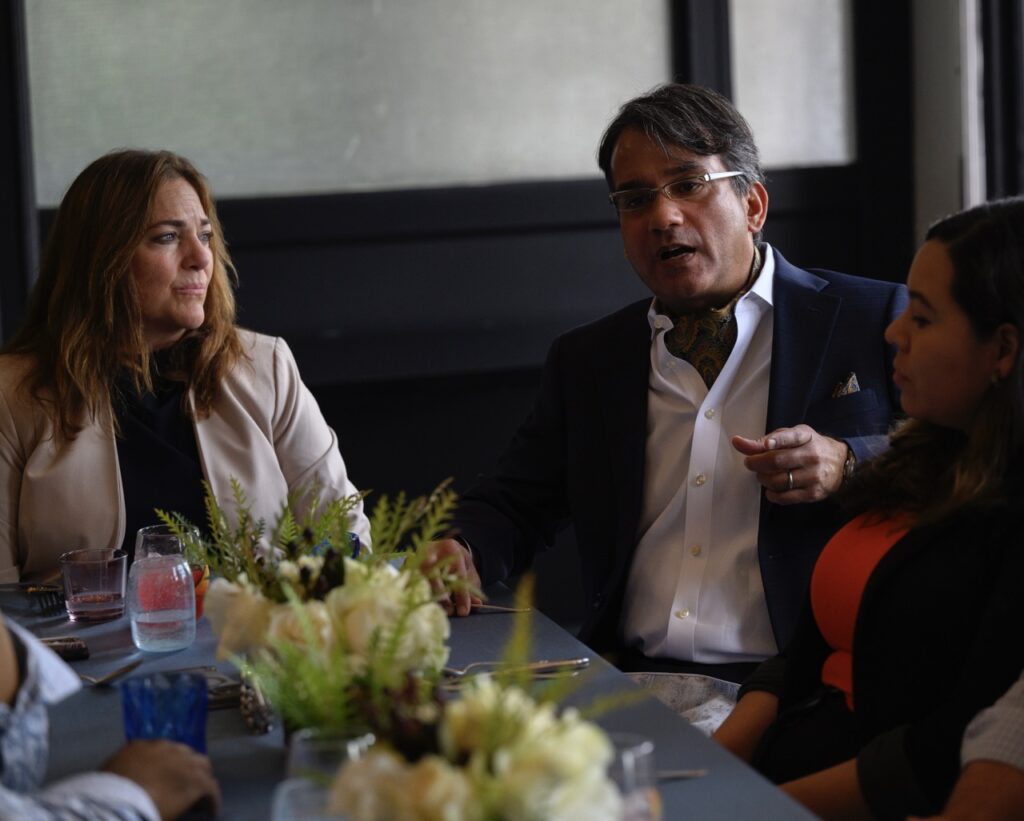
Diana Bucco, President, The Buhl Foundation and Ozzy Samad, President, Brother’s Brother Foundation
Supporting Wraparound Services
As part of the discussion of moving people from surviving to thriving, Gilliam said we must focus on wraparound services. For example, you can’t simply stick those with several mental health, addiction, and recovery issues in an apartment, and let them be. They also need case management, behavioral health support, and so on.
He’s hoping that county executives here will look at what models have failed in other cities, like certain housing programs in Portland, San Francisco, and New York. The discussion also touched upon a change in the definition of “homelessness” that took place before the pandemic, which now makes it harder to apply for services.
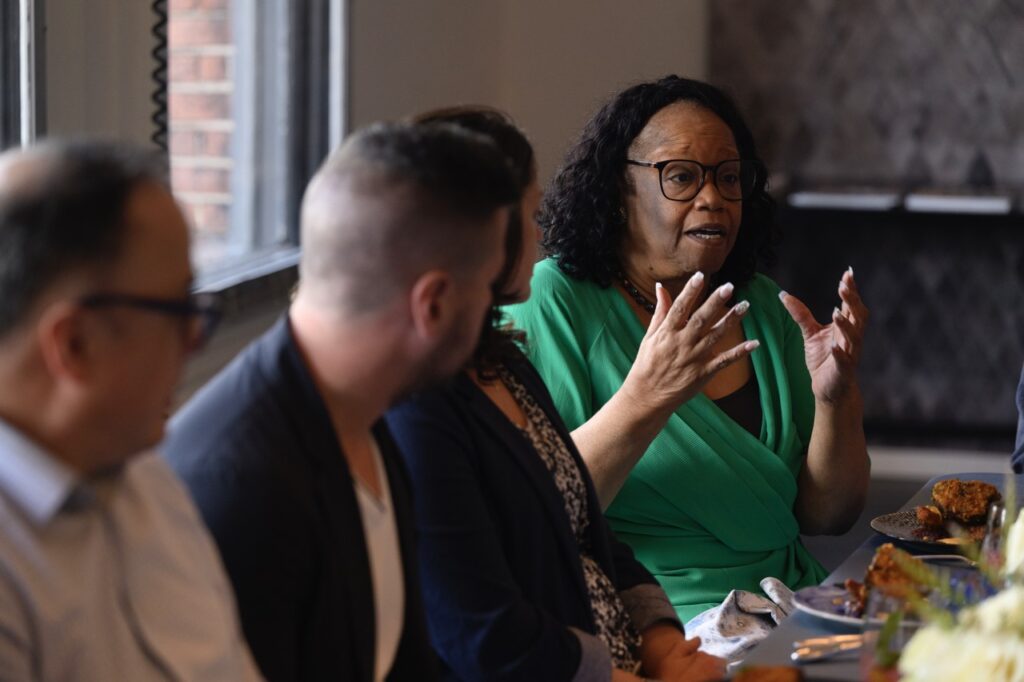
Rev. Brenda Gregg, Pastor, Destiny of Faith Church, and Founder and Executive Director, Project Destiny community outreach center
Reverend Brenda Gregg agreed about the necessity of wraparound services when talking about many single mothers she sees with no funding or child support. “People need more than a house,” she said. “They need all the other services we give everyone else.” They’ve also found that people don’t do well with traditional services, like simply walking into a doctor’s office (hence why so many use an emergency room instead).
Gregg feels the younger children need us the most, and we’re not working with them as much as we should. “Policy should be looking at kids who are most vulnerable and can’t speak out for themselves,” she said, “We’re trying to do that on the Northside as well.”
Detecting Disparities
The group agreed that everyone should have the food and resources needed to thrive, not merely survive. Lisa Scales revealed that most people are only one $400 emergency away from needing help with food. Recent estimates from Feeding America show that 1 in 10 individuals, including 1 in 8 children across the region, are living with food insecurity. These stats also indicate that Black neighbors face food insecurity at higher rates — tallying 1 in 4 Black Pennsylvanians, compared to 1 in 11 white Pennsylvanians.
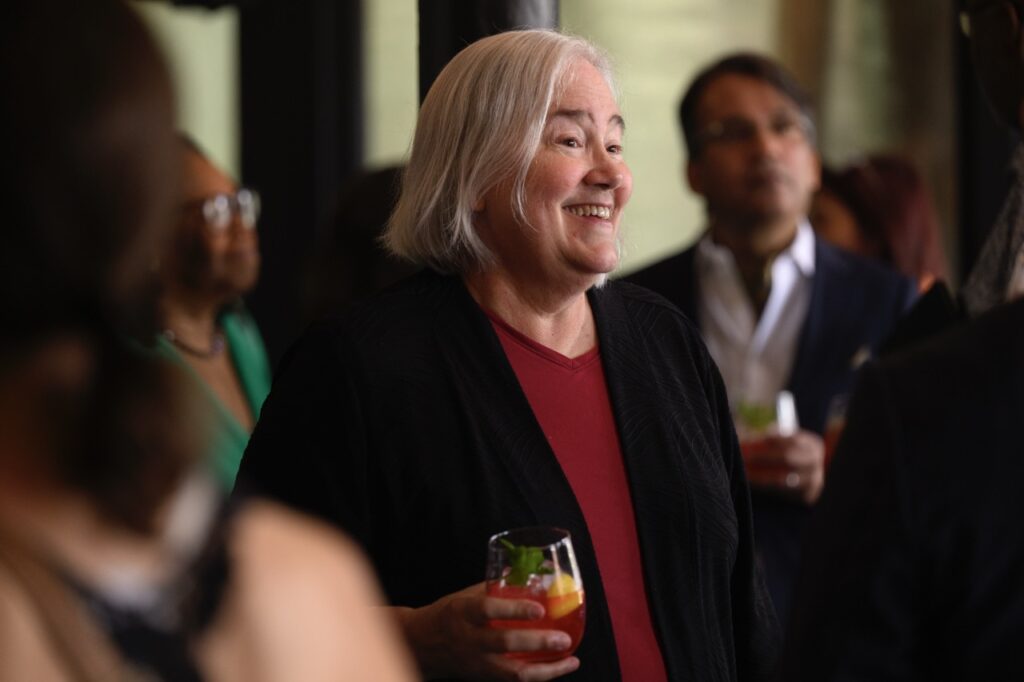
Lisa Scales, President and CEO, Greater Pittsburgh Community Food Bank
Last year, together with their network, Greater Pittsburgh Community Food Bank provided nearly 400,000 service visits at their pantries (marking a more than 24 percent increase from the year before). Across their 11-county service area, this organization distributed enough food for nearly 42 million meals, and rescued 18.4 million pounds of food that otherwise would have gone into a landfill. The calls for food assistance (more than 17,900), showed a nearly 12 percent increase from the year before.
Samad grew up in a developing country where he witnessed poverty on a completely different level. Yet he sees local disparities here to be “shocking” and “eye-opening,” too. He sees why some skip medical care. “Even if you can afford it,” he said, “you can’t get to it.”
Making a Change From the Start
James Fogarty feels his team’s number one intervention to poverty is education. Yet he knows an entire web of factors affects their mission of getting kids to school, including childcare, housing, transportation, food, language, and more. And since they clearly can’t be experts in each area, it’s helpful to leverage everyone’s expertise. For his organization’s part, Fogarty said, “We know we’re on the path to thriving if kids are showing up to school every day.”
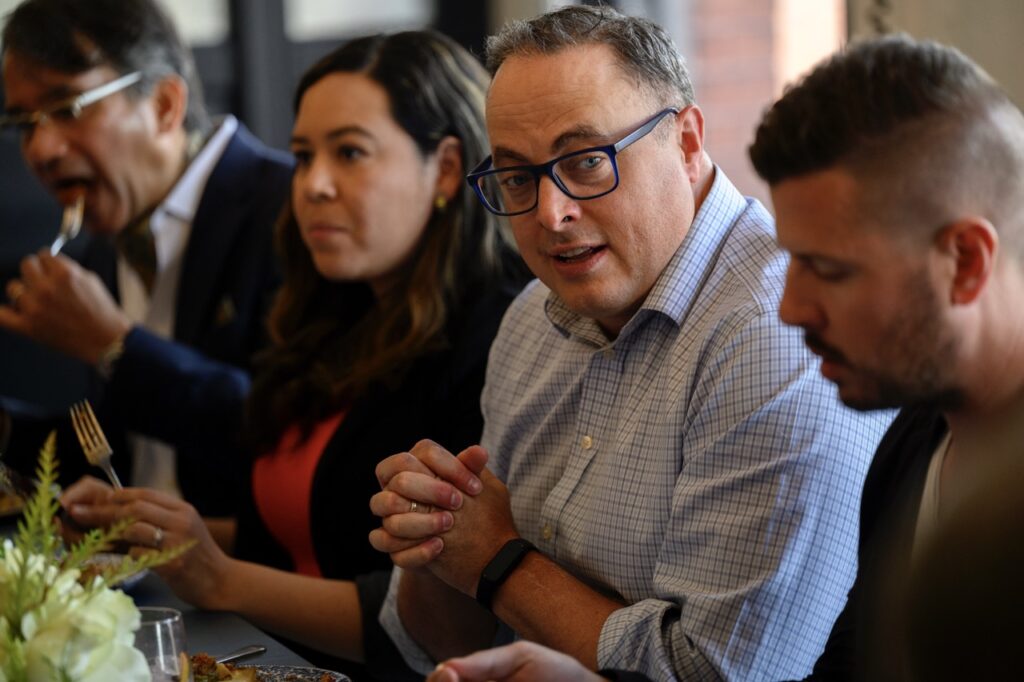
James Fogarty, Executive Director, A+ Schools Pittsburgh
He speaks about a sobering realization that arose during the pandemic: “There is no superman,” Fogarty says. “There’s no one is coming to save us.” Yet there has been an incredible network of partnerships formed, as everyone collectively tries to figure out how our community steps up and helps those who need it the most.
Getting More Residents Involved
So how to get folks to care? The group talked about the necessity of repeated messaging and communication, and the need to present problems in a way that lets us know we all can be part of the solution. Gregg shared the importance of humanizing the individuals they work with. “They’re just like you,” she said. “They’re strong, they’re resilient. They get up every day when some of us couldn’t.”
Since research shows people like collective giving and volunteering in groups, Davidson suggested hosting a dinner party where guests write down five causes they care about. Everyone can then agree to donate and to reconvene later for further action. “You can care about something for a little bit, and change your mind,” she added. “The most important thing we’re showing here is kindness for a neighbor.”
Scales gave a list of ways to get involved — donating, advocating, volunteering. The Food Bank relies on nearly 7,000 “backbone-of-their-work” volunteers annually to carry out their work. She also spoke on the importance of telling elected officials what issues concerned you the most. “Reaching out and participating in advocacy actions makes a difference in moving the needle on policy change,” she said. “Make your voice heard.”
These leaders acknowledge it can feel overwhelming to know where to start. Yet they never underestimate the power of good volunteers. Seals reminded the group that 80% of philanthropic giving happens on an individual basis. “Individuals need to show up and donate,” she said. “Because we need them.”

Looking Forward with Hope
The meal ended on the note that positive things are happening.
Seals talked about the loneliness that can arise working in the nonprofit space, and the importance of having a safe space to say, “This is hard.” (In fact, she offered to host the next group meal, so everyone can stay in touch.)
“We found out we can’t do it alone,” Gregg said. “It takes all of us to work together.”
Everyone agreed that while it feels important to share the challenges of their work, no one at this table is wallowing. There is tangible evidence of progress being made, and of the commitment, energy and know-how to take the next steps.
Bucco declared that while the issues are big, this group’s dedication, inspiration, and resiliency is bigger. She commended the ability of these changemakers to call it like it is. “There is no sugarcoating the problems, and no stepping away,” she said. “We want to know what that mountain looks like, because we’re going to have the tools to climb it.”
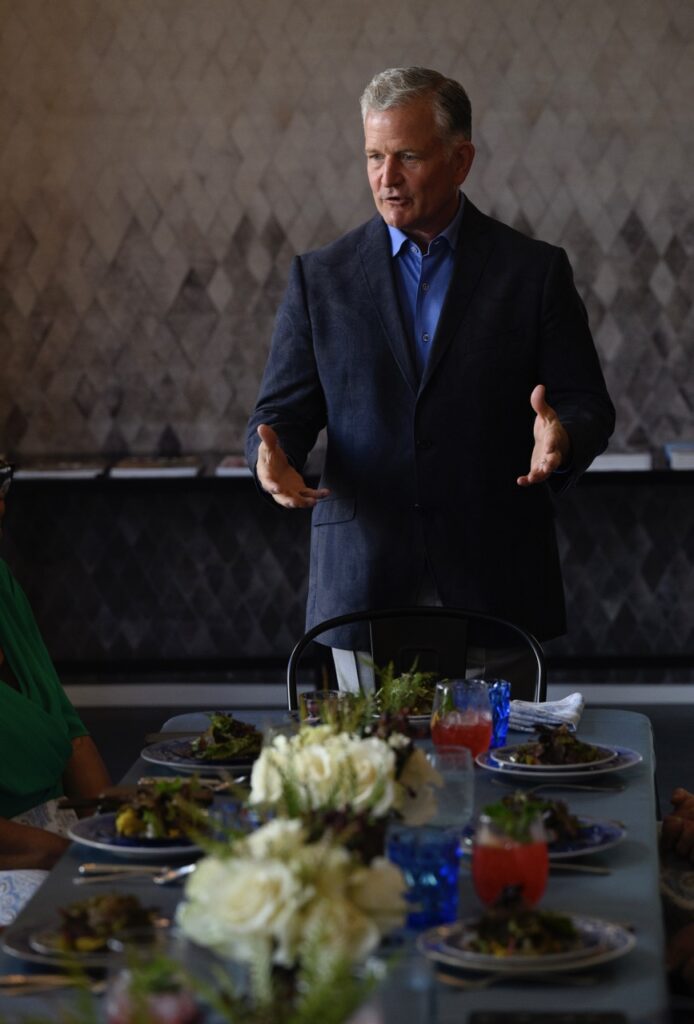
Keith Recker, Editor in Chief, TABLE Magazine
The Guest List
- A J Jefferson / Executive Director, Homeless Children’s Education Fund
- Demeshia Seals / CEO, Sarah Heinz House
- Lisa Scales / President and CEO, Greater Pittsburgh Community Food Bank
- Rev. Jerrel T. Gilliam / Executive Director, Light of Life Rescue Mission
- James Fogarty / Executive Director, A+ Schools Pittsburgh
- Rosamaria Cristello / Founder and Executive Director, Latino Community Center
- Sloane Davidson / Founder and CEO, Hello Neighbor
- Rev. Brenda Gregg / Pastor, Destiny of Faith Church, and Founder and Executive Director, Project Destiny community outreach center
- Ozzy Samad / President, Brother’s Brother Foundation
- Susan Chersky / Director of Operations and Communications, The Buhl Foundation
- Diana Bucco / President, The Buhl Foundation
- Keith Recker / Editor in Chief, TABLE Magazine
- Justin Matase / Publisher, TABLE Magazine
Story by Corinne Whiting / Photography by Jeff Swensen / Food by Chef Mike Godlewski, EYV / Linens by Mosaic

Subscribe to TABLE‘s print edition
